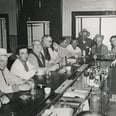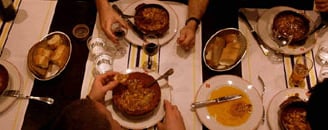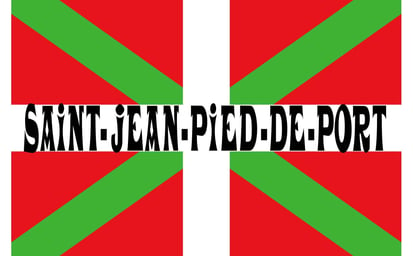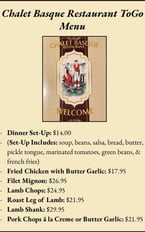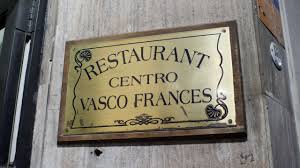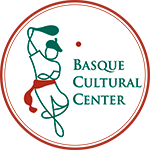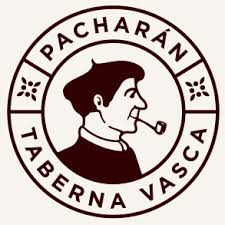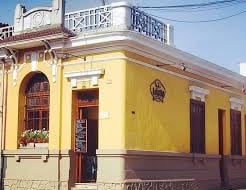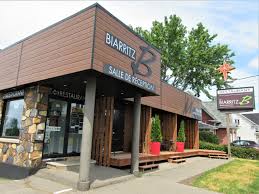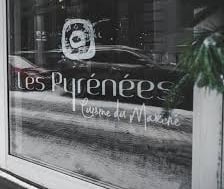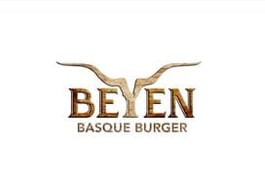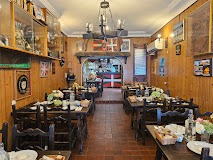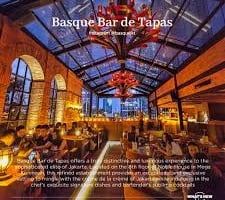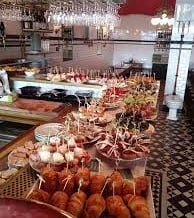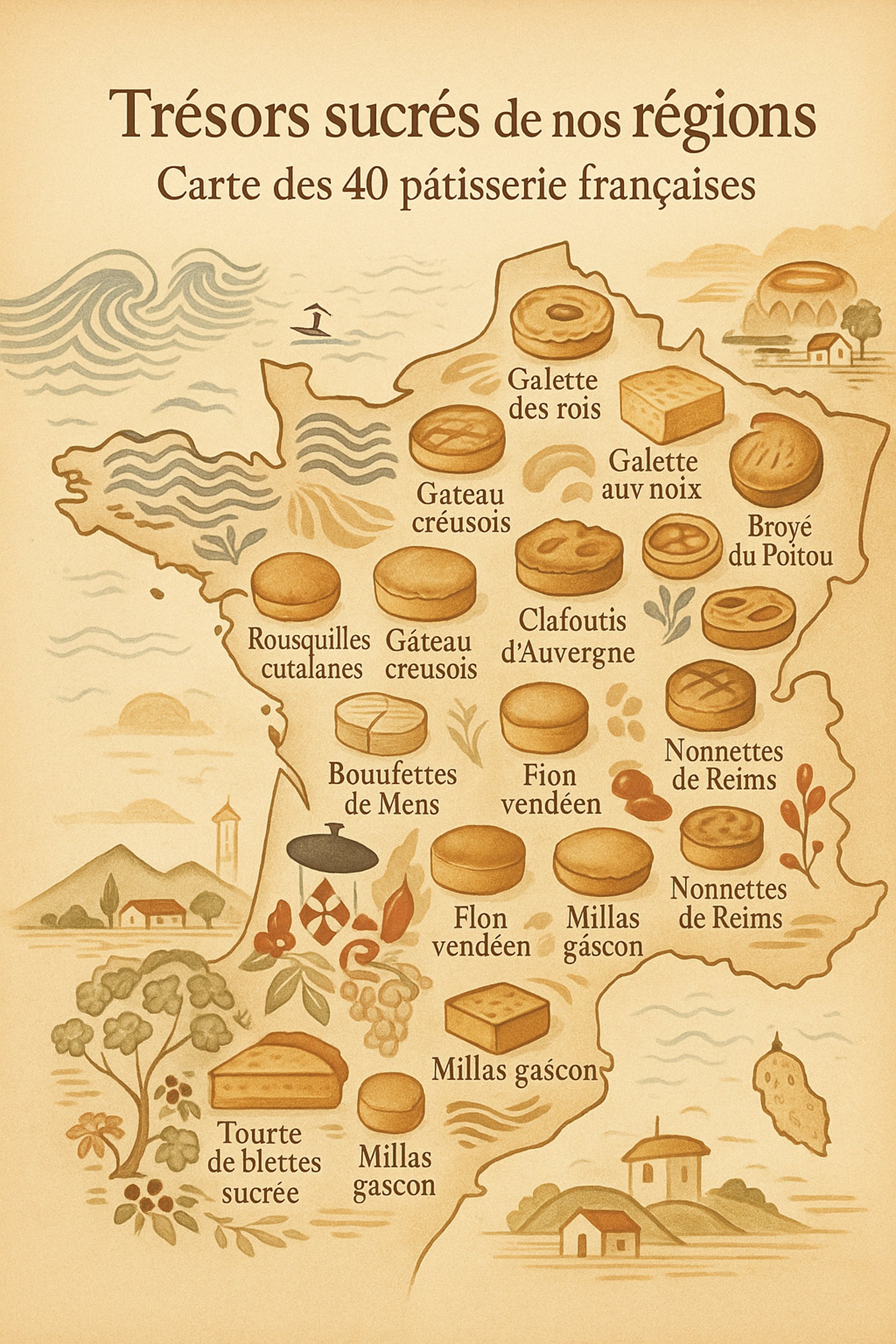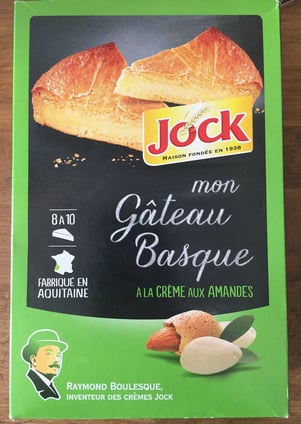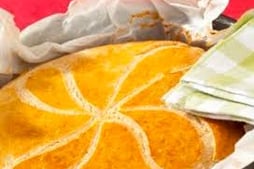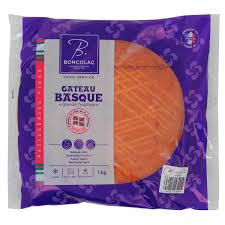Basque cake trip




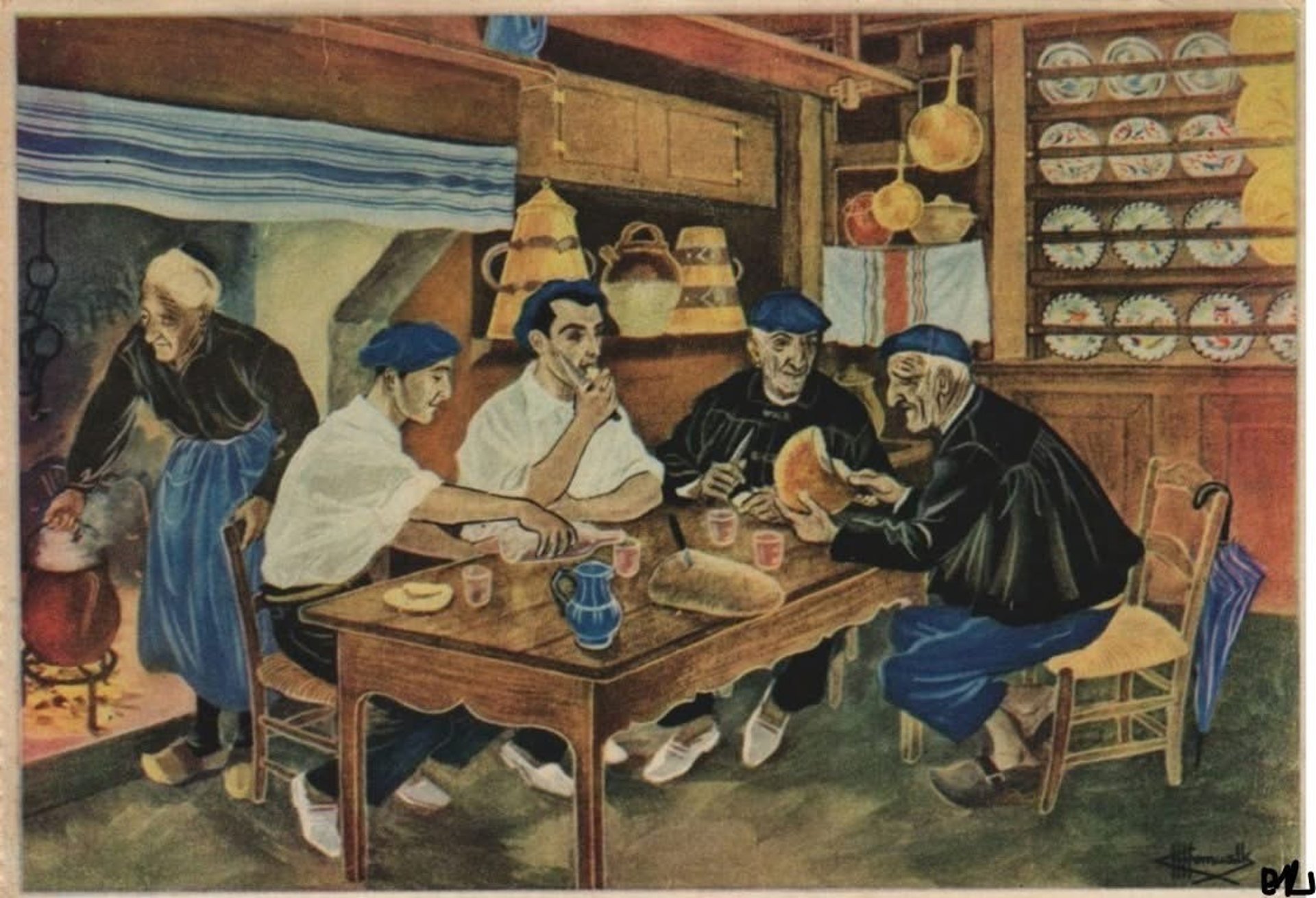
Tradition does not sell, it is transmitted.
Tradition, this word has no packaging.
It cooks in the houses.
It smells of black cherry or soft cream.
Not pistachio, not speculoos
Tradition is the silence of an oven that speaks more than any window.
To keep a tradition is not a business of trade. It is not a well -enlightened showcase, a marketing operation or a hazardous variation on a Sunday brunch slate. No. A tradition lives where it was born: in houses, in the heart of homes, in repeated gestures without ostentation, in the memory of a grandmother, in the smell that escapes from a familiar oven.
The Basque cake is the perfect example. He is one of the rare cakes that carry in him an entire land, an identity, a pride. And this identity, it is based on two pillars: pastry cream or black cherry jam. Nothing else. Everything else is only interpretation, gap, deviation. We will speak of "adaptation", of "creativity", but very often, these words are only apologies to justify the progressive abandonment of what makes sense. Because by dint of adaptations, revisits, we end up losing the essential. We no longer recognize the Basque cake, neither his taste, nor his soul.
It's a bit like building a magnificent Basque house, with its half -timbered half -timbered walls, its two -sided roofs ... and that we came to stick a modern aluminum pergola on the facade. Yes, it may seem practical, even attractive for some, but it destroys harmony, history, the beauty of the place. It is a wart on the face of time.
The Basque cake does not need to be reinvented. He needs to be respected. And this respect begins in homes, in villages, in the humble and faithful transmission of original recipes. Those who tell the truth of a people, not the air of time.
So no, it is not the trade that protects tradition. They are families. It is the hands that knead, the words that tell, the memories that bind. It is these moments that ensure that a tradition does not become a simple product. That she remains alive, sincere, rooted.
When you touch the soul, you end up erasing it.
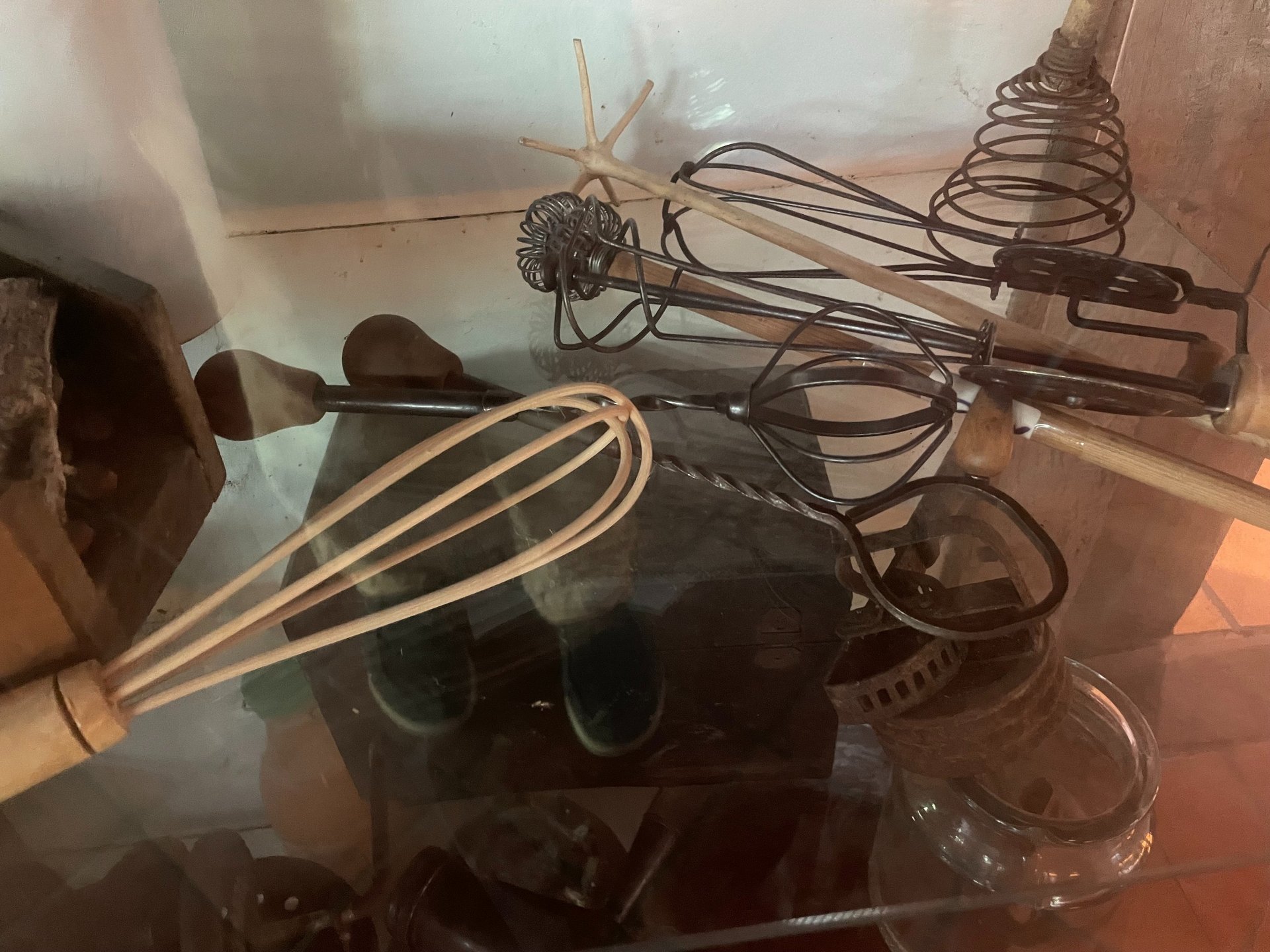
The silence of the ovens
How many of our “traditions” are born out of happy accidents?
"And if our Basque cake was only a beautiful error? A paste that cracked in the wrong place, a cream that frozen too quickly, an overly hot oven that gilded where it was not necessary ..."
The clues that argue for this theory:
• this texture so particular, or completely shortbread, nor completely cake
• These cracks on the top which seem accidental
•
• The rustic side, “imperfect” that you describe so well
and what? The accident becomes art when he finds his audience. The grandmother who misses her cake but still serves it by pride ... and discovers that it pleases more than the original.
This approach is perfectly written in your philosophy of the “pastry vestige of resistance”. A cake born from the assumed imperfection, the accident transformed into tradition.
Chronicle of a missed cake that has become a legend
or how the accident becomes heritage when it is proudly assumed
the founding error
there was once - because all legend begins - an amatxi in his Cambo kitchen. A Sunday morning like the others, or almost. The dough in his hands, the millennial gestures, and then ... something going through.
Maybe the too hot butter that day. Maybe the eggs of his hens a little too big. Perhaps this stone oven which still kept the heat of the bread from the day before. Or simply this distraction for a moment - a crying child, a passing neighbor.
The dough cracks. She cracks instead of staying smooth. She sags instead of going up. She brown too fast, irregularly. In the silence of the kitchen, this grandmother contemplates her disaster.
"Missed."
But here it is: we don't throw food. Not at that time. Not in this house. So she still comes out of her oven. She puts it on her worn wood table. She waits for him to cool, ashamed.
The clues of an accident
look at it well, this Basque cake. Really. With the eye of the one looking for the traces of the original accident.
This cracked surface, never perfectly smooth, which seems to wear the stigma of a culinary drama. These edges that curl up slightly, like a paste that fought against its mold. This very special density - neither completely shortened nor completely cake - as if two textures had fought and had ended up cohabiting by exhaustion.
And this color? Not uniform. Never. More golden areas than others, nuances that betray a capricious oven or a recalcitrant paste. Today's pastry chefs call it “rustic character”. The elders called it “Sunday shame”.
Even the garnish seems accidental. This pastry cream so dense that it never flows, as if it had frozen in fear in its cracked shell. Or these black cherries that punctuate the dough so irregularly guessing the trembling hand that arranged them.
The first lie
but the amatxe of our history has pride. When her family meets, she puts her cake on the table. Without an excuse word. Without an admission of failure. She cuts him with the same insurance as usual.
“It is different today.”
“Is it a new recipe?”
“No, that's… that's how we did it before.”
The first lie. Whoever transforms the accident into tradition. He who gives a story to chance.
And miracle: it pleases. This particular texture, this unexpected density, these flavors concentrated by the accident. The guests ask for again. They want the recipe for this “front cake”.
Our amatxi understands that she has just invented something unwittingly. Or rather: that she has just let something invent through her.
The transmission of the error
How do you transmit an accident? How do we teach chance?
She tries to make her mistake again. She finds approximate gestures, hazardous temperatures, wobbly timings. She learns to miss methods. She codifies chaos.
Her daughters learn of these strange gestures. They reproduce without understanding these techniques which seem to go against common common sense. Why mix so little? Why this firm dough? Why this hot oven?
"Because it's like that."
"But why?"
“Because before, we didn't know how to do otherwise.”
The second lie. Whoever transforms incompetence into ancestral wisdom.
The resistance of the imperfection
of decades pass. The Basque cake travels, spreads, codifies. Schooling pastry chefs try to “perfect” it. They smoothed its surface, unify its color, lighten its texture.
But something resists. The Basques shake their heads: “That's not it.” They ask for imperfection. They demand the beauty of the accident. They defend their error which has become heritage.
Because that's it, perhaps, the real tradition: not the repetition of the perfect gesture, but the precious conservation of the original imperfection. Loyalty to the founding accident.
The praise of the failure
today, in our sanitized kitchens, with our programmable ovens and our precise thermometers, we meticulously reproduce this accident of yesteryear. We praise scientifically what was perhaps the shame of a Sunday.
And it's beautiful. It is beautiful because it reminds us that the most beautiful things are sometimes born from our failures. May art begin where the technique admits defeated. That certain traditions are only errors sublimated by time and love.
Is the Basque cake, basically, only the most famous failure in the history of pastry? A happy accident that has become a symbol of a people who knows how to transform their imperfections into pride?
If this is the case, then each time we do it - and falls, and gondolas, and that he resists our attempts to perfection - we do not randate our cake.
We succeed in our story.
Because after all, what is a tradition, if not a first gesture, one day, which found thanks to those who tasted it?
What a Basque cake failed us
the tender lies of the family table
The preceding silence
he comes out of the oven. Not as expected. Never as expected, by the way, but this time it's different. This time, it's really missed.
The surface has split like dry land. One side has brown more than the other. The cream overflowed with a crevasse, creating a frozen flow on the side. The mold may have moved, or it is the dough that has rebelled.
In the kitchen, silence. The one preceding the verdict. The one where the cook contemplates its failure before the others see.
“They will notice it.”
“They will know.”
“What are they going to say?”
The art of family diplomacy
but here is the family that arrives. The noses that are imperceptibly frighting. The looks that come across. And then, this well-oiled mechanics of disguised love:
“Oh! It is… original that one!”
Original. The first lie. Whoever transforms failure into creativity. Which makes clumsiness an artistic choice.
“He looks different from other times.”
Different. More diplomatic. Sweet. Who says neither well nor bad, just ... other. As if being different was, in itself, a quality.
“Have you tried a new technique?”
Ah, that one! Transform the accident into experimentation. Make a failed cook a daring innovator. "Yes ... I wanted to try something."
“It's interesting, this texture.”
Interesting. The magic word. Whoever does not judge but who observes. Which pretends to discover where there is simply failure.
Children do not lie
“Why is it all broken, Amatxi?"
Truth comes out of children's mouths. Cruel. Direct. Without filter.
“It is not broken, my heart. It is… rustic.”
Rustic. Another of those words that dress failure. Which make clumsiness a return to basics.
“But the other times, it was not like that.”
“Each cake is unique, you know.”
And this is how we teach children to lie with tenderness. To transform disappointment into philosophy. Each unique cake ... as each failure is unique.
What the first knife reveals
the moment of truth: cutting. The knife that sinks and reveals the interior.
The dough too dense on one side, too fragile on the other. The cream that turned slightly, or that has separated. This texture which is neither the one we expected, nor the one we hoped for.
“Ah, you see, it stands anyway.”
Anyway. These two words that save everything. Which concede imperfection but claim existence. It is missed, of course, but it still exists.
“And then, the taste is what matters.”
The withdrawal on taste when appearance failed. As if the taste buds were more forgiving than the eyes. As if love was better through the mouth than through the gaze.
The survival compliments
“MMM, it has this one!”
Character. When you can't say “delicious”, we say “character”. When beauty is lacking, we invoke personality.
“We feel homemade.”
Homemade. Code for: imperfect but sincere. Bancal but authentic. Missed but with love.
“It changes trade cakes.”
The ultimate argument: comparison with industry. Even failed, the artisanal keeps its nobility in the face of the perfect manufactured.
“In any case, we see that you put it in the heart.”
Of the heart. When the technique abandons, we invoke feelings. As if love could buy clumsiness.
What really says a failed cake
but basically, what does he tell us, this failed cake, beyond the tender lies of the family table?
He says that perfection is not of this world. That every culinary gesture is a bet against failure. That even the most expert amatxes have their days without.
He says that family love is measured by the quality of his lies. To this collective capacity to transform failure into difference, clumsiness in originality.
He says that tradition, perhaps, is only made of these successive accommodations. From these “it is not serious” repeated from generation to generation until they become truth.
He especially says that we continue. That despite the failure, we tighten. We share. We eat together which is not perfect, because it is together that we did.
The post-Gâteau
once the table has been getting rid, once the diplomatic compliments are exhausted, will this question remain: will it start again?
Of course it will start again. Because that's it, cooking: accepting failure as part of the process. Integrate the possibility of the failure in the hope of the success.
And next time, when the cake is perfect - or almost - we will say:
“Ah, this one is successful! Not like the last time…”
And we will laugh. Of this failure which will have served to measure success. Of this failure which will have given its value to success.
Because maybe failed cakes are only used: teaching us the price of those who are not.
And then, let's be honest: in the silence of our kitchens, we all know that a slightly missed Basque cake is strangely like ... a successful Basque cake.
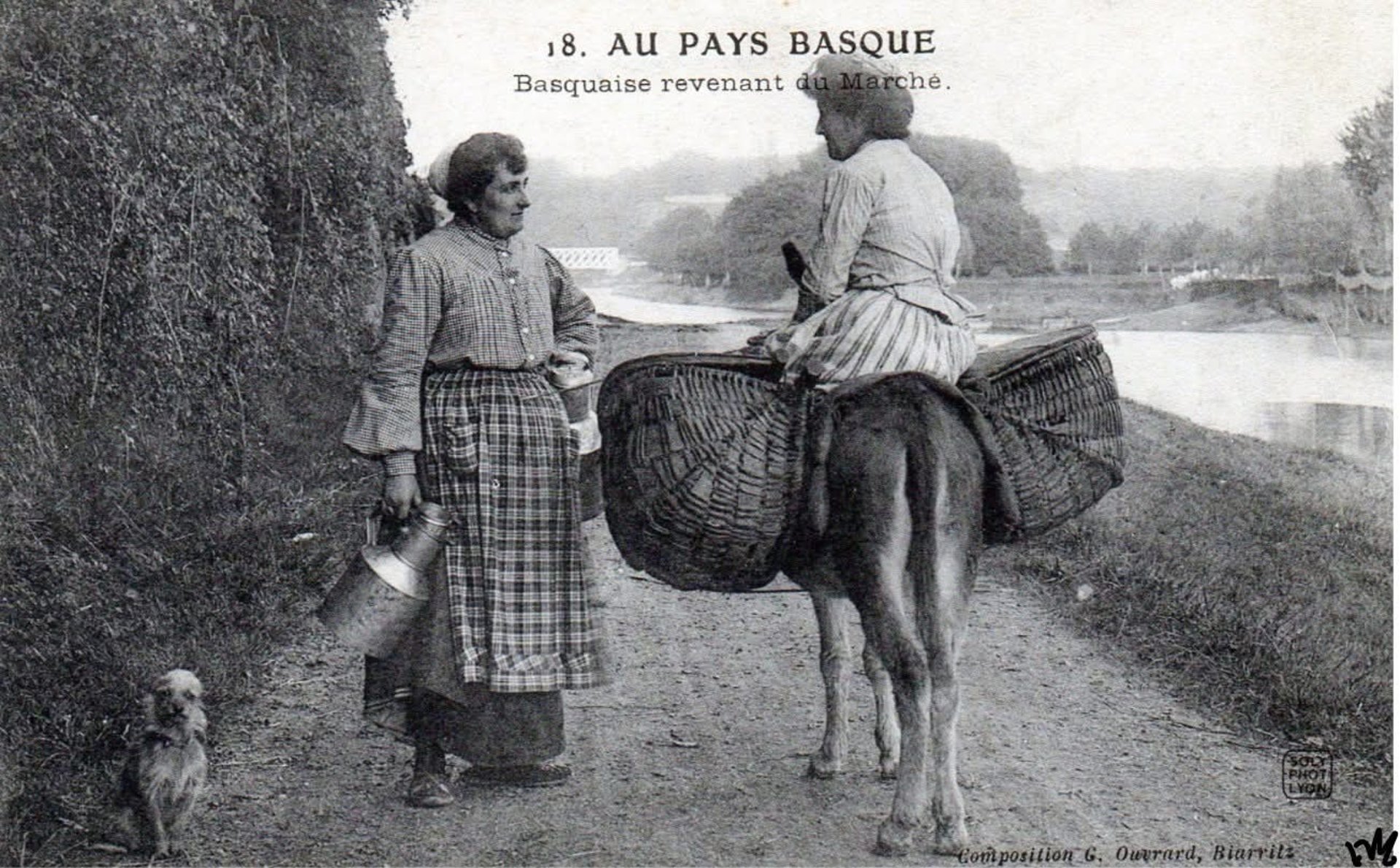
The oldest Basque cake houses in the Basque Country
The Pereuil house in St Pée sur Nivelle (1876)
The Maison Barbier Millox in St Jean Pied de Port (1947)
Ingres pastry in Cambo les Bains
Dodin pastry in Biarritz (1925)
Miremont pastry in Biarritz (1872)
Minhondo pastry in Irissarry
The Etchebaster pastry shop in St Jean de Luz (1909)
La Pâtisserie Mauriac in Bayonne (1934)
The Pradére bakery in Sarer
The Berterreix in Espelette
The Adam pastry in St Jean de Luz (1660)
The Ithurralde bakery in Mauléon
The Darrigues bakery in St Pée sur Nivelle
The Henriet chocolate factory in Biarritz (1946)
The Basque Bidarray cake in Bidarray
The Basque cake museum in Sare
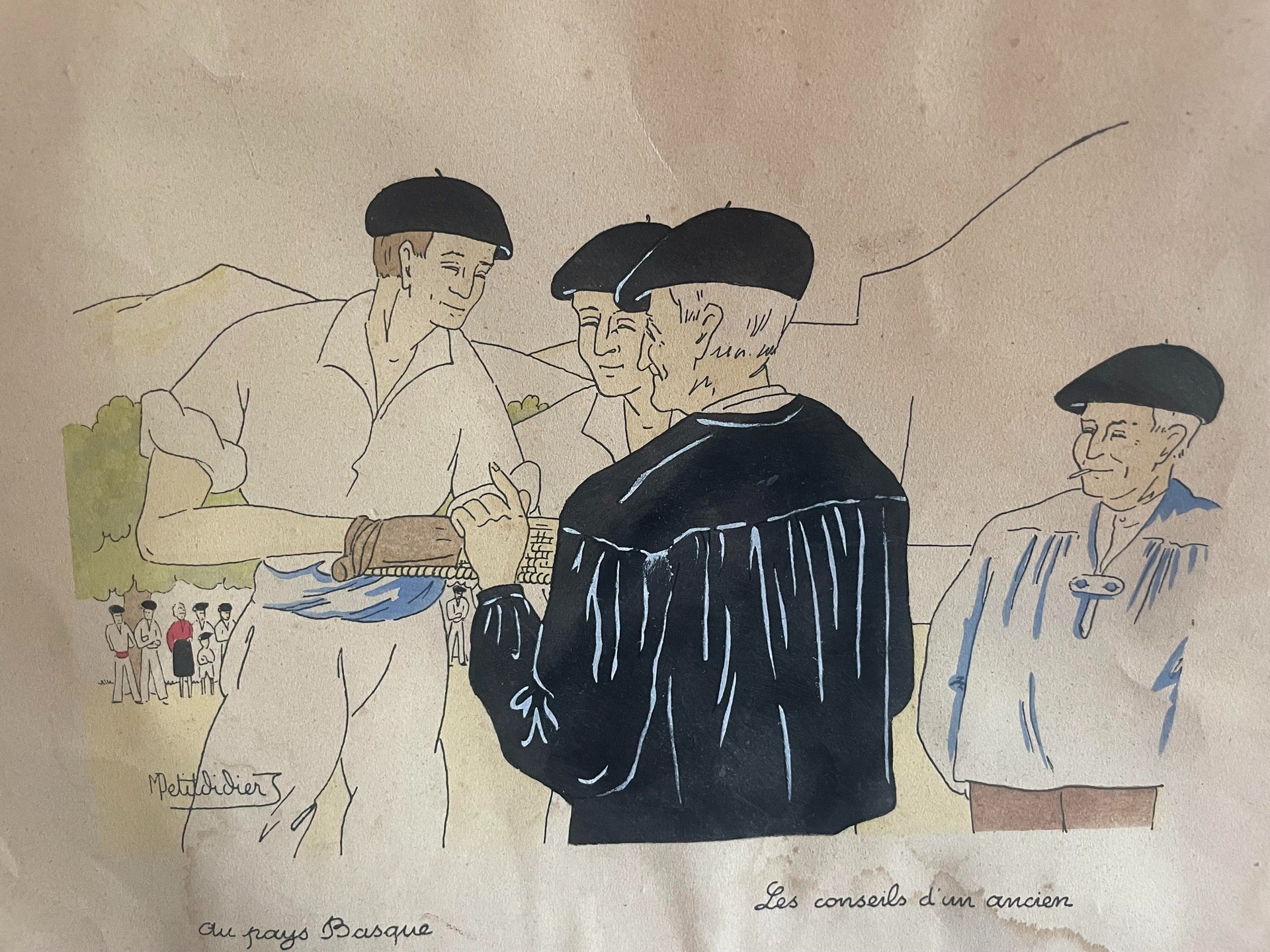
The Basque cake is like its country.
The Basque cake embodies this plural, solid and warm identity. Under his golden crust, he hides the diversity of his people: cream or cherry, each garnish has its roots, its defenders, its secrets.
It is a reflection of a country with seven provinces united by language, memory, and love of good things. From Sare to Saint-Jean-Pied-de-Port, from Donostia to Vitoria, he crosses borders without ever losing his soul.
Both simple and noble, the Basque cake is not only a pastry: it is a way of being in the world, with pride, generosity and taste.
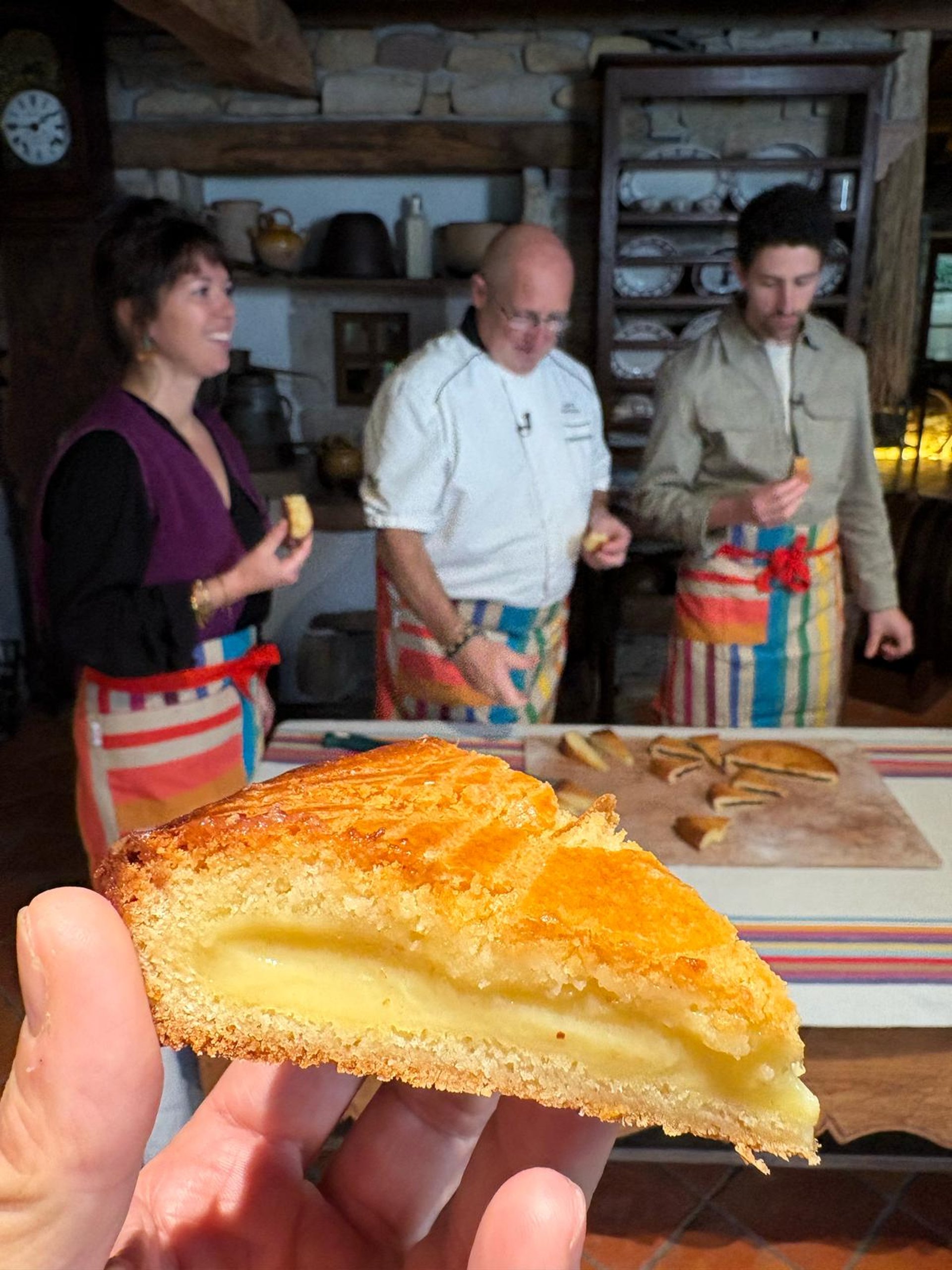
They discovered the Basque cake ...
And they fell in love with it
🇯🇵 Yuki Takahashi (Tokyo, Japan) -
Patisserie Adam Saint-Jean-de-Luz, 2023
"The crisp of the dough, the softness of the cream ... It was a surprise. »»
How did you discover the Basque cake?
I was traveling with my sister in the Basque Country and our Airbnb host advised us a bakery by the port. We tasted a Basque Cream Cake.
What did you feel?
For me, it reminded me of the Japanese Wagashi , in the care given to the textures.
Have you tried to do it again?
Yes ! I found a recipe on the internet and adapted it to my Japanese ingredients.
A word to describe it?
Subarashii - "wonderful", in Japanese.
🇺🇸 Michael Brown (Austin, Texas, USA) -
The Basque cake museum , Sare 2022
“It's not just a dessert, it is a cultural symbol. »»
How did you hear about the Basque cake?
A report on an American culinary channel. I put the museum on our route.
What did you like?
The black cherry version, with good black coffee. And the "homemade" aspect.
An anecdote?
My son ate three parts. We brought two to the house ... They did not survive customs.
A word to describe it?
Comfort Food . Happiness in paste.
🇩🇪 Lena Müller (Munich, Germany)
Basque cake celebration , Cambo-les-Bains 2021
“The taste of the Basque Country is also air, people, emotion. »»
First time in the Basque Country?
Yes ! And I fell in the middle of the Basque cake party. What an atmosphere!
What marked you?
Each cake had a different personality. Like beer with us!
A sequel to your return?
I found a pastry in Berlin which in fact. But it's not the same.
A word to describe it?
"Heimat" . This German word that means "at home".
🇨🇦 Émilie Gagnon
(Montreal, Canada) - Espelette, 2022
“It is the first time that a dessert has evokes me an entire village. »»
How did you discover the Basque cake?
By walking in the Espelette market. It was hot, there was music, and a stand offered shares.
What did you feel?
It was like crunching a memory that I had not yet. A taste for tradition and sweetness.
Did you talk about it on the return?
Yes ! I even made a conference at my Francophiles club on Basque gastronomy.
A word to describe it?
Endearing.
🇦🇷 Carlos Domínguez
(Mendoza, Argentina) - Bayonne, 2019
“The Basque cake is proof that simple things can become unforgettable. »»
Why were you in the Basque Country?
I came for a rugby match and my family is from the Basque Country. A Bayonnais friend invited me to taste the Basque cake that I know because we find it in Argentina but a little less good in my opinion.
What was the context?
On the terrace, with a good glass of Irouléguy. The late afternoon light.
Did you like it?
Immediately. I bought an integer for my friends from the club.
A word to describe it?
Sincero. (authentic)
🇬🇧 Sarah Whitmore
(Brighton, England) - Biarritz, 2021
"Thought it was a rustic cake ... but he requires real precision. »»
How did you know the Basque cake?
During a pastry class in Biarritz. He was on the program!
Difficult to do?
Yes, but very satisfactory. The dough is subtle, the garnish too.
Have you redone it?
Yes, several times. It is called "Basque Pie" at home.
A word to describe it?
Timeless. (out of time)
<📣 Do you too have a story to tell?
In Nvoyez-us your testimony to contact@legateau-bais.com Share your photo with
#Voyageengtebasque on Instagram!
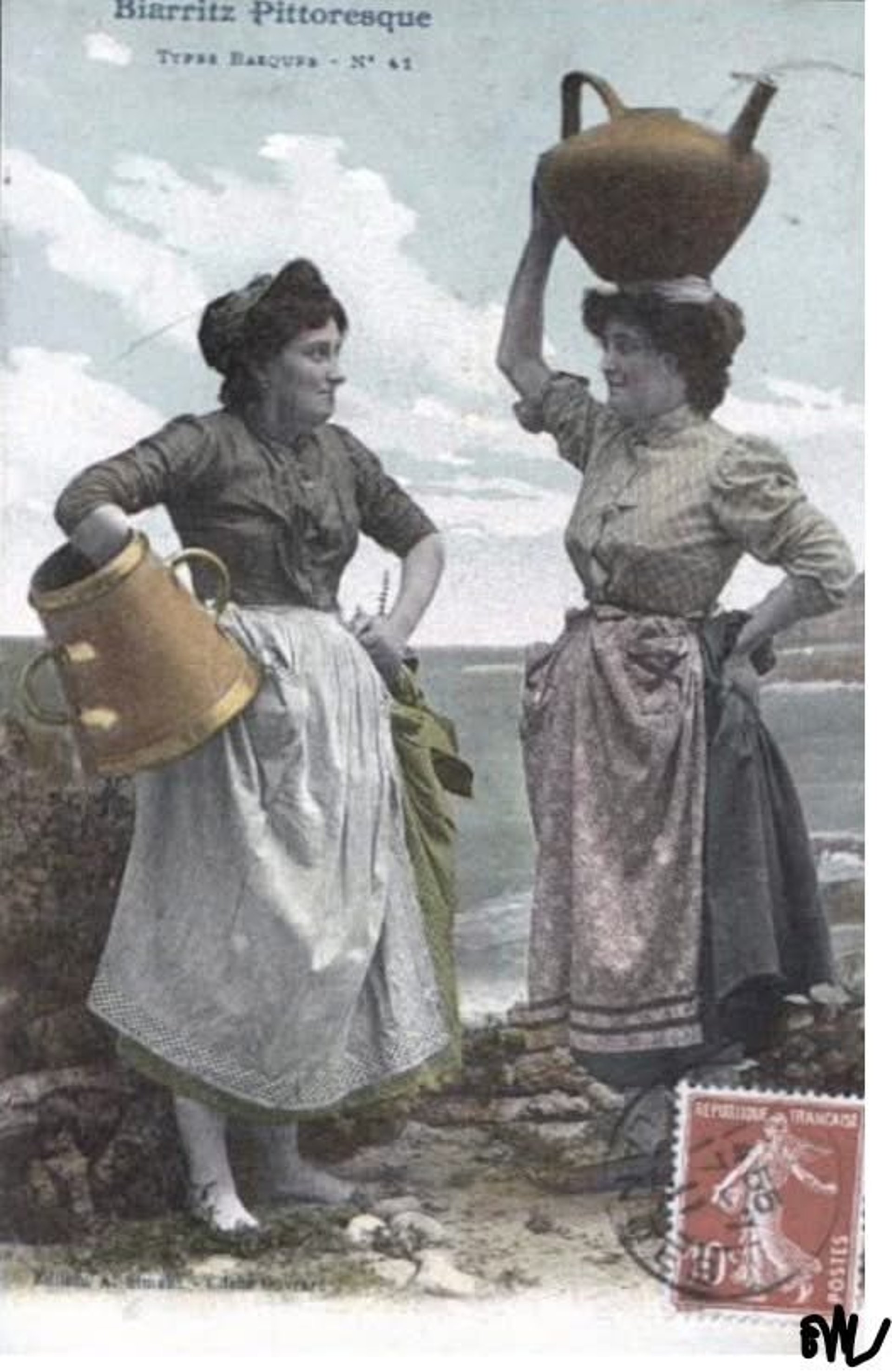
The Basque cake and the diaspora that has suffered so much from its expatriation around the world!
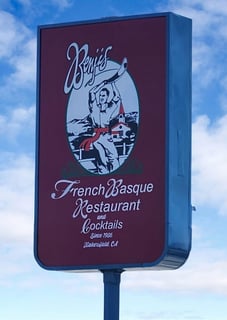

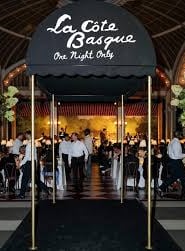



new York


